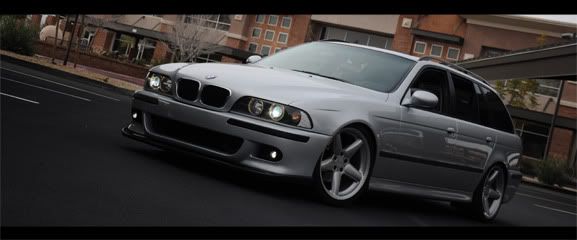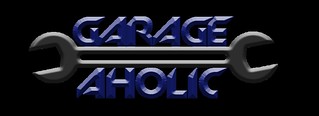Parts:
-Rocker panels/side skirts off any 92-95 Ford Taurus including rear trim cap. Make sure you bring a philips head screwdriver with you as its all you need to remove them.
-paint (primer/base coat/clear coat)
3m Mounting Tape.
Tools needed:
Drill
Drill bits
Wood screws
Dremel tool or equivilant
sand paper
5/18" speed nuts x 4
5/18" X .5" bolts
1.) Try to find skirts in the best condition possible. Urethane is NOT metal and does not respond well to bondo or glazing putty, or for that matter sanding.

I found my skirts for $6.32 a piece at my local pick a part!!!!
I LOVE 50% off Tuesdays!!!
New ones would have been preferable as virgin parts are much easier to paint and get a good finish out of but they come up as obsolete in Ford's data base which means they are not regularly stocked.
2.) Using your motor tool, trim about three inches off the back of the skirt.
TEST FIT!! TEST FIT!! TEST FIT!!! I cannot stress that enough.


3.) Then trim about two to three inches off the caps.

4.) using the drill and a bit smaller than the thread of the screws, make pilot holes through the caps and the skirts at the back as shown. Then screw the caps to the back of the skirt.



This is where the depth of the screw becomes important. I put mine all the way through and then cut off the ends with the motor tool. You can go the other way but then you'll have exposed screw heads. If you go all the way through and cut/grind off the ends you'll have two barely noticeable dots on the back of the skirt when your finished painting, just be careful not to dig into the urethane as its not that easy to fix
5.) Sand your skirts smooth with 300 grit to prep them for primer. I like to use a good filler primer to take care of any small imperfections on the surface. Surface primer works by slowly filling in the imperfections, in order for this to work you need to sand down the layers surrounding the scratch so the paint builds up only in the scratch.
If you use any high build/ filler primer be sure to follow up with a primer sealer, if you don't, the very porous filler primer will soak up the solvents from the base/clear and "deflate" into the surface scratches (yuck.)
6.) After the primer has dried fully I usually spray two coats of base color to get even coverage. Then I follow up with one light layer of clear, too much tends to reactivate the base, and when your working with metallics this can be disastrous, and finally a heavy wet coat. This wet coat is important if you plan to wet sand the piece later as you need to ensure you have enough clear on the part to not sand through it later.
7.) To mount the skirts I used 3M mounting tape along the sills (be sure to THOROUGHLY clean the sills and skirts before using it.)
Then I wedge one of the speed nuts over the edge of the skirt and lip of the fender, inserting and tightening the bolt increases the tension on the nut and holds the skirts in place.
I only did this because I'm a little weary of drilling holes in the body of my car. Ideally I'd like to drill holes and run bolts, but there isn't enough metal up front to do it, and I hate rust.



-Rocker panels/side skirts off any 92-95 Ford Taurus including rear trim cap. Make sure you bring a philips head screwdriver with you as its all you need to remove them.
-paint (primer/base coat/clear coat)
3m Mounting Tape.
Tools needed:
Drill
Drill bits
Wood screws
Dremel tool or equivilant
sand paper
5/18" speed nuts x 4
5/18" X .5" bolts
1.) Try to find skirts in the best condition possible. Urethane is NOT metal and does not respond well to bondo or glazing putty, or for that matter sanding.

I found my skirts for $6.32 a piece at my local pick a part!!!!

I LOVE 50% off Tuesdays!!!
New ones would have been preferable as virgin parts are much easier to paint and get a good finish out of but they come up as obsolete in Ford's data base which means they are not regularly stocked.
2.) Using your motor tool, trim about three inches off the back of the skirt.
TEST FIT!! TEST FIT!! TEST FIT!!! I cannot stress that enough.


3.) Then trim about two to three inches off the caps.

4.) using the drill and a bit smaller than the thread of the screws, make pilot holes through the caps and the skirts at the back as shown. Then screw the caps to the back of the skirt.



This is where the depth of the screw becomes important. I put mine all the way through and then cut off the ends with the motor tool. You can go the other way but then you'll have exposed screw heads. If you go all the way through and cut/grind off the ends you'll have two barely noticeable dots on the back of the skirt when your finished painting, just be careful not to dig into the urethane as its not that easy to fix
5.) Sand your skirts smooth with 300 grit to prep them for primer. I like to use a good filler primer to take care of any small imperfections on the surface. Surface primer works by slowly filling in the imperfections, in order for this to work you need to sand down the layers surrounding the scratch so the paint builds up only in the scratch.
If you use any high build/ filler primer be sure to follow up with a primer sealer, if you don't, the very porous filler primer will soak up the solvents from the base/clear and "deflate" into the surface scratches (yuck.)
6.) After the primer has dried fully I usually spray two coats of base color to get even coverage. Then I follow up with one light layer of clear, too much tends to reactivate the base, and when your working with metallics this can be disastrous, and finally a heavy wet coat. This wet coat is important if you plan to wet sand the piece later as you need to ensure you have enough clear on the part to not sand through it later.
7.) To mount the skirts I used 3M mounting tape along the sills (be sure to THOROUGHLY clean the sills and skirts before using it.)
Then I wedge one of the speed nuts over the edge of the skirt and lip of the fender, inserting and tightening the bolt increases the tension on the nut and holds the skirts in place.
I only did this because I'm a little weary of drilling holes in the body of my car. Ideally I'd like to drill holes and run bolts, but there isn't enough metal up front to do it, and I hate rust.








Comment